�
Simulation of
Communication Systems
Second Edition
Information Technology: Transmission, Processing, and Storage
Series Editor:
Jack Keil Wolf
University of California at San Diego
La Jolla, California
Editorial Board: James E. Mazo
Bell Laboratories, Lucent Technologies
Murray Hill, New Jersey
John Proakis
Northeastern University
Boston, Massachusetts
William H. Tranter
Virginia Polytechnic Institute and State University
Blacksburg, Virginia
Multi-Carrier Digital Communications: Theory and Applications of OFDM
Ahmad R. S. Bahai and Burton R. Saltzberg
Principles of Digital Transmission: With Wireless Applications
Sergio Benedetto and Ezio Biglieri
Simulation of Communication Systems, Second Edition: Methodology,
Modeling, and Techniques
Michel C. Jeruchim, Philip Balaban, and K. Sam Shanmugan
A Continuation Order Plan is available for this series. A continuation order will bring delivery of each new volume
immediately upon publication. Volumes are billed only upon actual shipment. For further information please contact
the publisher.
�
Simulation of
Communication Systems
Second Edition
Modeling, Methodology, and Techniques
Michel C. Jeruchim
Lockheed Martin Management & Data Systems
Valley Forge, Pennsylvania
Philip Balaban
AT&T Laboratories
Holmdel, New Jersey
K. Sam Shanmugan
University of Kansas
Lawrence, Kansas
KLUWER ACADEMIC PUBLISHERS
NEW YORK, BOSTON, DORDRECHT, LONDON, MOSCOW
�
9715
2672
�
To
Joan, Claude, and Kenny
and to the memory of my parents, Sonia and Samuel
Anna, to Victor and Nona and their families
and to the memory of my parents, Shifra and Israel
Radha, Kannon, and Ravi
and to the memory of my parents
—MCJ
—PB
—KSS
�
�
Preface
Since the first edition of the book was published, the field of modeling and simulation of
communication systems has grown and matured in many ways, and the use of simulation as a
day-to-day tool is now even more common practice. Many new modeling and simulation
approaches have been developed in the recent years, many more commercial simulation
packages are available, and the evolution of powerful general mathematical applications
packages has provided still more options for computer-aided design and analysis. With the
current interest in digital mobile communications, a primary area of application of modeling
and simulation is now to wireless systems of a different flavor than the traditional ones.
Since the objective of modeling and simulation is to study and evaluate the behavior and
performance of systems of current interest, the practice of simulation has naturally evolved
along with the types of systems that have emerged or are being designed for the future.
Nevertheless, to the extent that simulation is an embodiment of fundamental principles of
several disciplines, communication theory in particular, the practice of modeling and simu-
lation is still very much grounded in those basics. It is these principles, along with the many
tricks of the trade that accompany their application, that still form the main focus of this
second edition.
This edition represents a substantial revision of the first, partly to accommodate the new
applications that have arisen. The text has been extensively reorganized and expanded. It now
contains 13 chapters instead of the previous 7. Some of the former chapters have been divided
into more logical units, edited for greater clarity where needed, and extended in coverage for
selected topics. This division was made in part to facilitate the use of this book as a teaching
text. Two new chapters were added on material only lightly covered in the first edition. One
new chapter, on modeling and simulation of nonlinear systems, provides a fairly extensive
discussion of “black-box” modeling of nonlinear systems with memory, and a comple-
mentary section on related measurement techniques. As hinted above, perhaps the most
dramatic change in the communications/telecommunications industry since the first edition
has been the explosion of wireless services. In consequence, we have included a new chapter
on channel modeling, the bulk of which deals with multipath and fading channels, the usual
environment for wireless systems. As in the first edition, one chapter provides several case
studies as a means of illustrating different ways of approaching a problem and applying
specific modeling and computational techniques from the arsenal of possibilities available to
the simulation practitioner. The first case study is a thoroughly reworked version of a previous
vii
�
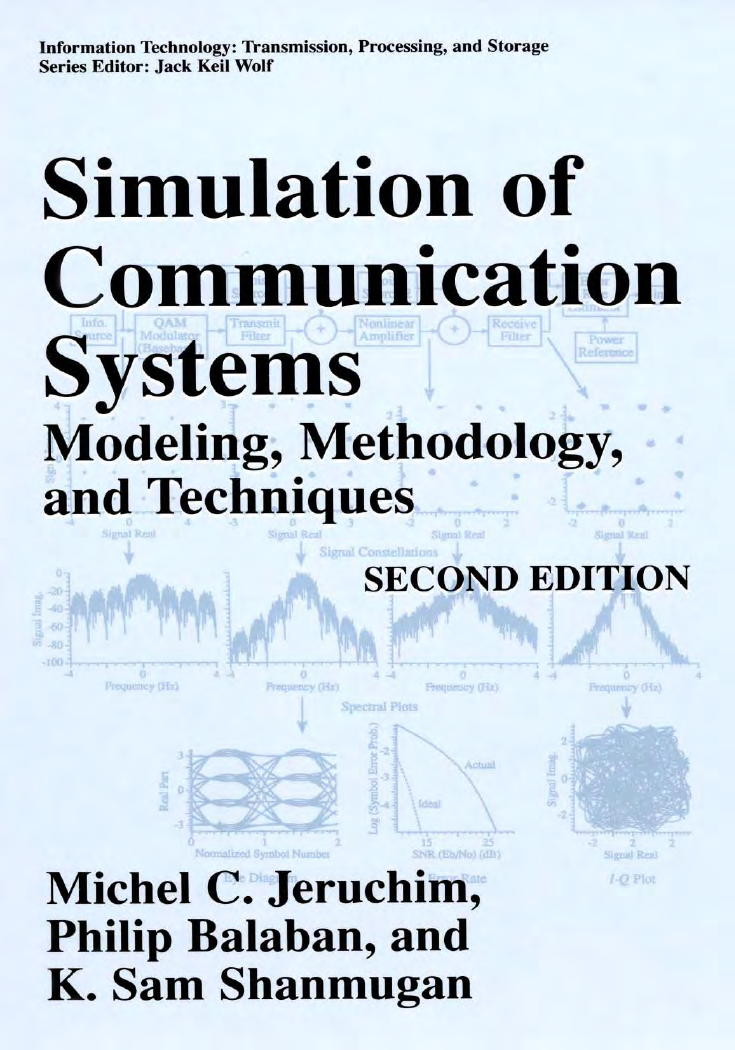
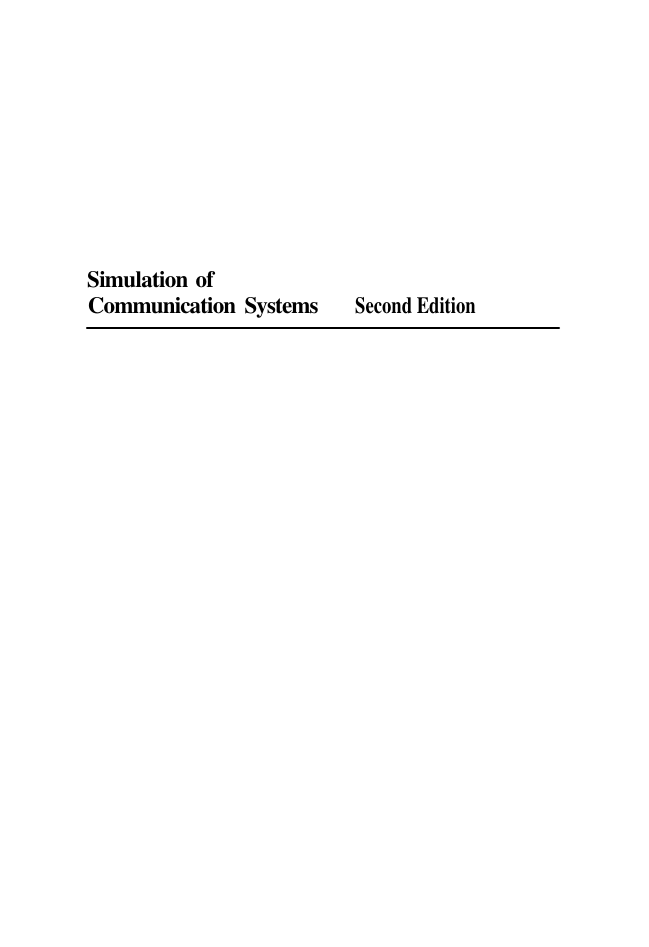
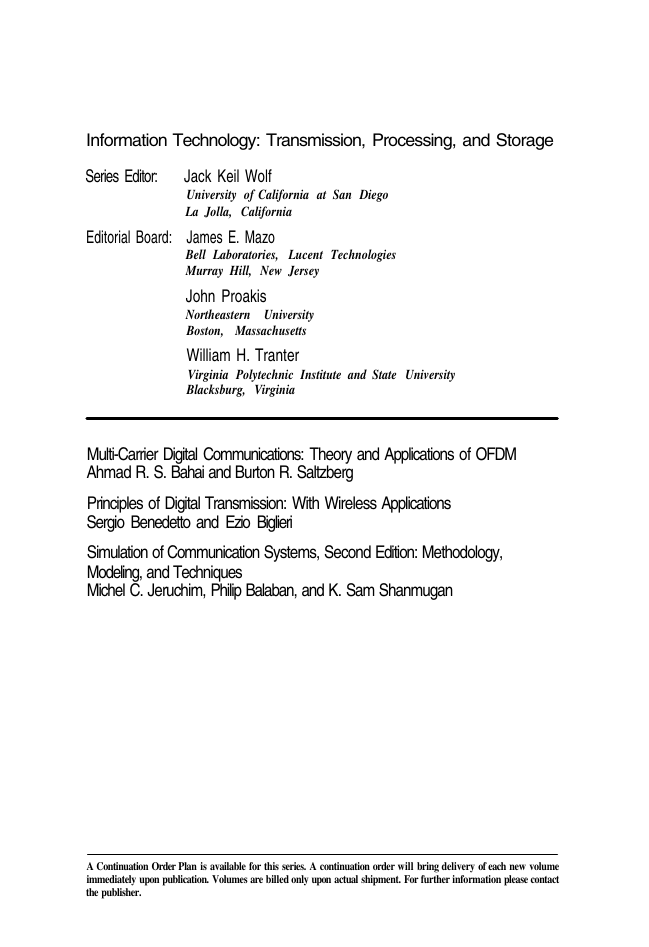
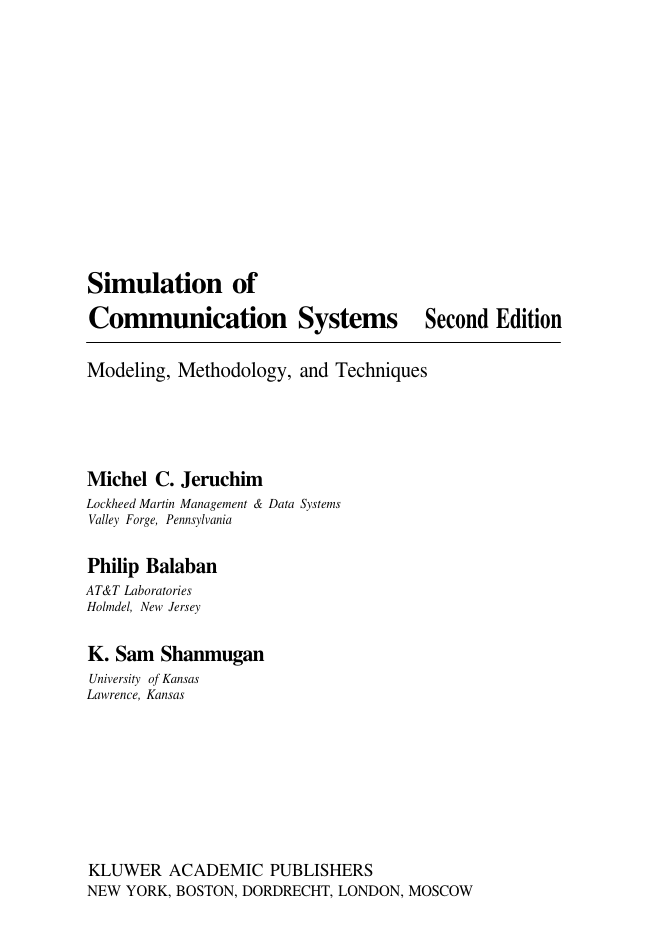



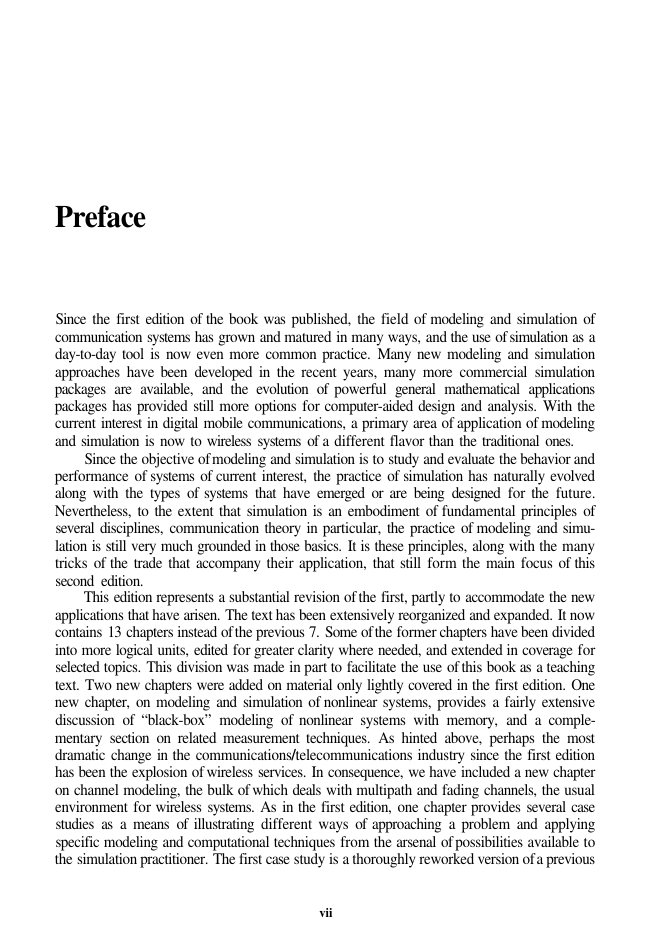








 2023年江西萍乡中考道德与法治真题及答案.doc
2023年江西萍乡中考道德与法治真题及答案.doc 2012年重庆南川中考生物真题及答案.doc
2012年重庆南川中考生物真题及答案.doc 2013年江西师范大学地理学综合及文艺理论基础考研真题.doc
2013年江西师范大学地理学综合及文艺理论基础考研真题.doc 2020年四川甘孜小升初语文真题及答案I卷.doc
2020年四川甘孜小升初语文真题及答案I卷.doc 2020年注册岩土工程师专业基础考试真题及答案.doc
2020年注册岩土工程师专业基础考试真题及答案.doc 2023-2024学年福建省厦门市九年级上学期数学月考试题及答案.doc
2023-2024学年福建省厦门市九年级上学期数学月考试题及答案.doc 2021-2022学年辽宁省沈阳市大东区九年级上学期语文期末试题及答案.doc
2021-2022学年辽宁省沈阳市大东区九年级上学期语文期末试题及答案.doc 2022-2023学年北京东城区初三第一学期物理期末试卷及答案.doc
2022-2023学年北京东城区初三第一学期物理期末试卷及答案.doc 2018上半年江西教师资格初中地理学科知识与教学能力真题及答案.doc
2018上半年江西教师资格初中地理学科知识与教学能力真题及答案.doc 2012年河北国家公务员申论考试真题及答案-省级.doc
2012年河北国家公务员申论考试真题及答案-省级.doc 2020-2021学年江苏省扬州市江都区邵樊片九年级上学期数学第一次质量检测试题及答案.doc
2020-2021学年江苏省扬州市江都区邵樊片九年级上学期数学第一次质量检测试题及答案.doc 2022下半年黑龙江教师资格证中学综合素质真题及答案.doc
2022下半年黑龙江教师资格证中学综合素质真题及答案.doc